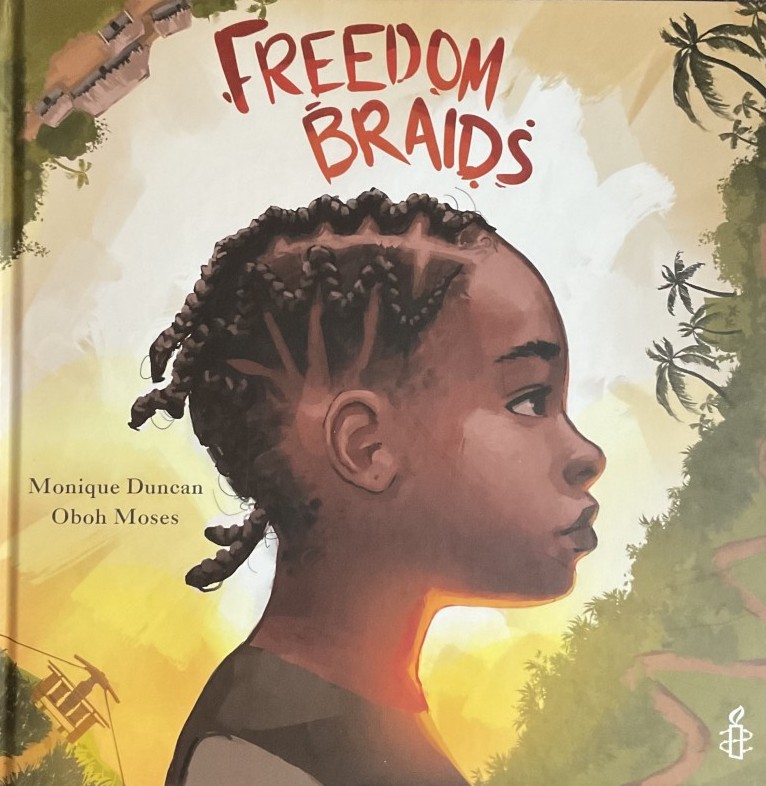Inspiring Young Readers
 posted on 22 Sep 2024
posted on 22 Sep 2024
Freedom Braids by Monique Duncan, illustrated by Oboh Moses
When we visit the United States, we are always impressed with the range of beautiful and informative books now available for children that look at different aspects of the history of slavery and the Civil Rights Movement. Although the experience of people with African and Caribbean heritage living in the UK is very different, it is good to see this one published by Lantana just in time for Black History Month, so that it could be used for discussion in schools. This excellent publisher has a longstanding commitment to producing books that reflect a wide variety of cultural backgrounds with an emphasis on the positive representation of individual differences.
Cover pictures are so important in captivating the attention of a reader and this one for Freedom Braids by Monique Duncan depicts the profile of a young girl with distinctively braided hair. I looked at this closely with Naomi, my nine-year-old grand-daughter who liked the sun setting in the background which gave the hint of a happy ending. She suggested that she looks very thoughtful and relieved and is perhaps thinking about what she is going to do with the rest of her life.
This story is set in Columbia where some slaves were able to escape from the plantations to create free communities. Nemy is a little girl who works hard every day sowing seeds, pulling weeds and stripping leaves on one of the many sugar plantations with other slaves. Night time brings some much-needed rest and I loved the double page spread that shows Nemy hidden behind a tree as ‘Big Mother’, one of the older women, helps a group of women braid each other’s hair in the firelight. The purple, starless night sky and muted colours provide a powerful backdrop to a ritual that is charged with atmosphere. The turn of the page shows her being included as ’wrinkled fingers smoothed her tangles’ and she is reminded of her own Nana. The necessary secrecy from the slaveholders and resulting strong female solidarity is impressive.
Eventually Nemi and a small group of women are able to make their long- planned escape:
‘Over and under gold mine,
Zigzagging tropical rainforests.
In and out of swamplands,
Crisscrossing dirt roads.’
There is a useful and very concise afterword by the author to explain the motivation for the fictional story. Although I know the history as an adult (because this subject was never part of my education in the 1950s and 1960s), it is horrifying to be reminded of the extent of the Transatlantic Slave Trade to North and South America over hundreds of years. Children do now learn about this to some extent, but they will find it fascinating to realise that enslaved women were able to use a range of braided messages in their hair to secretly map out routes to freedom. This was a desperately dangerous enterprise:
‘The women also braided the obstacles they would encounter on their journey. Thick braids called “tropas” (“troops” in English) showed that Spanish troops or enslavers were nearby.’
I strongly recommend this thought-provoking, wonderfully illustrated book with end papers that show eighteen complex named braiding styles. I hope that it will be used throughout the school year, not just during October because, like many people, I believe that the subject is too huge and important for one month only.
It should be available from your local independent bookshop – who will be happy to order it for you if they don’t have it on their shelves.
Karen Argent
September 2024

